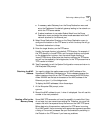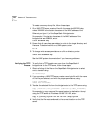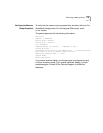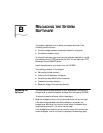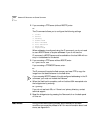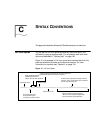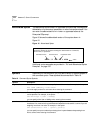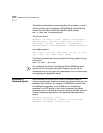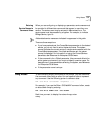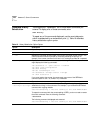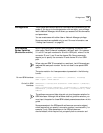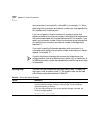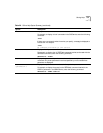
Full and Abbreviated Syntax Examples 155
Full and
Abbreviated Syntax
Examples
The following examples show full form first followed by the abbreviated
command syntax.
The full form syntax:
ADD !<port> -NRIP AdvToNeighbor <network>%<MAC address> [...]
can be abbreviated to:
ADD !<port> -NRIP ATN <network>%<MAC address> [...]
vertical bar | Separates mutually exclusive items in a list, one of which must be entered. For example, in the
syntax:
SET ScreenLength = [None | <line>(6–100)]
you can specify either the keyword None or enter a number between 6 and 100 when
entering the command.
ellipsis ... Following a parameter name or value, indicates that one or more additional arguments may
be specified on the same command line. For example, in the syntax:
ADD !<port> -IP SecAuthIn <authority> [<authority> ...] [ANY]
you can specify multiple authorities (GENSER, SIOP, SCI, NSA, DOE, NONE) when entering
the command.
hyphen - A letter preceded by a hyphen represents a command option. Also, when you enter a service
name as part of the command, you must precede the service name with a hyphen. For
example, in the command:
SETDefault -BRidge CONTrol = Bridge
the hyphen must be included with the service name BRidge when entering the command.
braces { } Enclose a list of values, one of which must be entered. For example, in the syntax:
SETDefault !<subaddr #> -Gateway SubAddrMap = {(<IPaddr> | <PSAPaddr>) |
None}
you must enter either an IP address, presentation service access point (PSAP) address, or the
keyword None when entering the command.
exclamation mark ! A number preceded by an exclamation mark represents a port, virtual port, or path number.
For example, in the syntax:
SHow [!<port>] -DECnet CONFiguration
the exclamation mark must be included before the port number when entering the
command.
Table 18 Command Syntax Symbols (continued)
Symbol Description



